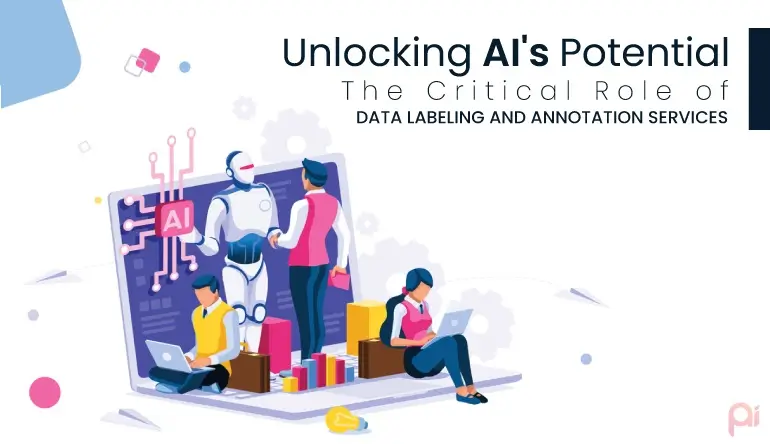


In the fast-paced and constantly changing realm of artificial intelligence (AI), basic procedures such as data classification and annotation cannot be overstated. The fundamental power of AI technologies, which are quickly changing sectors like healthcare and automotive, is largely dependent on the caliber of data preparation. Services for annotation and data labeling are not extras that are desirable; rather, they are necessary for creating effective AI models.
Data labeling involves adding meaningful labels to raw data to provide context for machine learning. Whether it’s images, videos, or text, every piece of data must be annotated with accurate labels to train models effectively. For instance, in medical imaging, labels might indicate whether a scan shows a tumor, while in autonomous vehicle training, annotations might outline pedestrians or vehicles.
Training ML Models: The core functionality of ML models depends on learning from labeled datasets. The accuracy of these labels directly influences the model's
Improving Model Accuracy: High-quality annotation helps in refining the model's predictions, making them more precise and reliable. For example, detailed annotations in facial recognition systems can improve the system's ability to recognize faces under varying lighting conditions and angles.
Enabling Advanced AI Applications: From real-time object detection in video surveillance to sentiment analysis in customer service, advanced AI applications rely on well-labeled datasets to function correctly and efficiently.
Data annotation involves multiple techniques tailored to the type of data and the specific requirements of the project:
Image and Video Annotation: This includes methods like bounding boxes, polygonal segmentation, landmark annotation, and more, which help in identifying and categorizing visual elements.
Text Annotation: Techniques such as entity recognition, sentiment analysis, and categorization are used to train models that process natural language.
Audio Annotation: Labeling audio files with text descriptions or categorizing sounds can be used in applications like speech recognition and ambient noise understanding.
Data labeling is not without its challenges, which can impact the scalability and effectiveness of AI projects:
Scale: As AI models become more complex, the amount of data needed grows exponentially. Labeling this data manually is often time-consuming and costly.
Quality: Maintaining high standards of accuracy in data labeling is crucial. Errors during the annotation process can lead to flawed AI training and poor model performance.
Privacy: Particularly in sensitive fields such as healthcare or finance, ensuring that data labeling complies with regulatory requirements for data privacy and security is essential.
To manage the scale and complexity of data annotation tasks, several tools and platforms have emerged:
Automated Annotation Tools: Software that uses basic pre-trained models to automate the annotation process, reducing the time and cost involved.
Crowdsourcing Platforms: These platforms allow projects to distribute tasks to a large pool of workers, enabling rapid data processing.
Professional Annotation Services: Specialized companies provide expert data annotation services, ensuring high-quality data for training AI models.
Healthcare Imaging: In a project aimed at diagnosing diseases from X-ray images, data annotation services labeled thousands of images with indications of various conditions, significantly improving the accuracy of the diagnostic AI.
Autonomous Vehicles: For a self-driving car company, millions of road images were annotated to identify and categorize different elements like traffic lights, pedestrians, and obstacles, enhancing the AI’s navigational capabilities.
"As artificial intelligence technology continues to evolve, its significance in various fields and industries is becoming increasingly apparent."data labeling and annotation is only set to grow. Innovations in automated annotation, machine learning techniques for semi-supervised learning, and the integration of AI in the annotation process itself are likely to shape the future.
Data labeling and annotation services are fundamental to the success of AI applications. By ensuring high-quality, accurately labeled datasets, these services not only enhance the intelligence of AI models but also expand their potential applications across various industries. As we continue to harness the power of AI, the role of effective data annotation in unlocking its full potential cannot be underestimated.